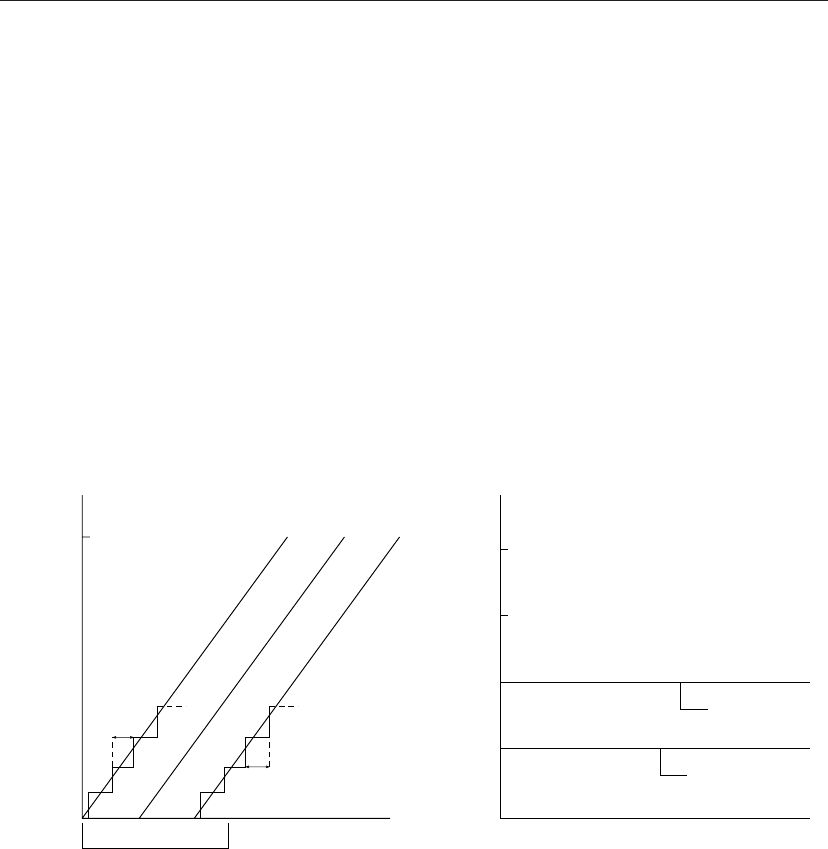
26/30
¡ Semiconductor MSM66201/66P201/66207/66P207
Absolute error (E
A
)
The absolute error indicates a difference between actual conversion and ideal conversion,
excluding a quantizing error. The absolute error of the A/D converter gets larger as it
approaches the zero point or full scale. (Refer to Conversion Characteristics Diagram 1.)
Relative error (E
R
)
The relative error indicates a deviation from a line which connects the center point of the zero
point conversion width with that of the full scale conversion width, excluding a quantizing
error.
The relative error of this A/D converter is almost due to a differential linearity error.
Zero point error (Ez) and full scale error (E
F
)
The zero point error and full scale error indicate a difference between actual conversion and
ideal conversion at the zero point and full scale, respectively. (Refer to Conversion
Characteristics Diagram 1.)
A/D Converter Conversion Characteristics 2 (temperature characteristics)
Conversion Characteristics Conversion Characteristics
Diagram 2-1 Diagram 2-2
Differential linearity error (E
D
)
The differential linearity error indicates a difference between the actual conversion width
(actual step width) and ideal value (1LSB).
With this A/D converter, a voltage for actual conversion is shifted and the inclination of a
voltage is changed, with changes of temperature (see Conversion Characteristics Diagram 2-
1). Specifications described in the foregoing tables are established from Eta shown in
Conversion Characteristics Diagram 2-1 (E
D
=Eta–1LSB). Conversion Characteristics Diagram
2-2 shows temperature characteristics of differential linearity of Es in Conversion Characteristics
Diagram 2-1.
3FF
[HEX]
000
E
S
Eta [V]
–40°C
+25°C
+85°C
+4
[LSB]
0
Temparature Ta
+3
+2
+1
–40 +85
During normal
operation
During HALT
E
S
Conversion
Code
Analog Input
ES
Differential
Linearity
[°C]


















